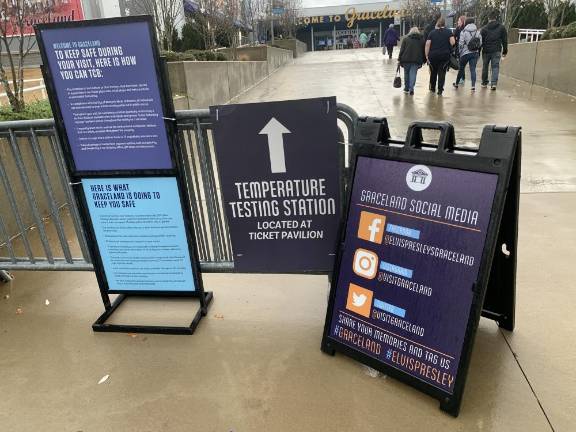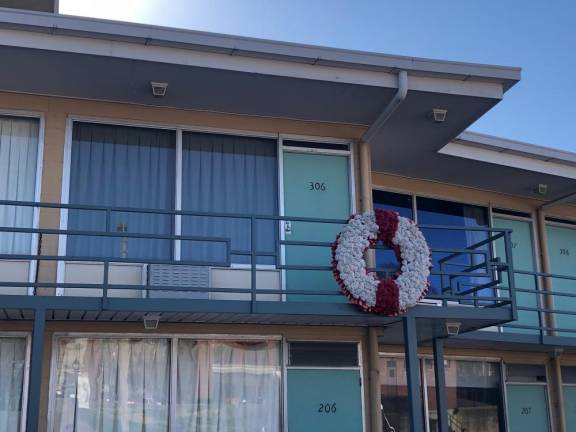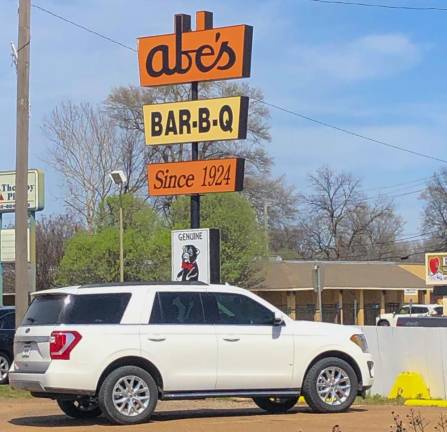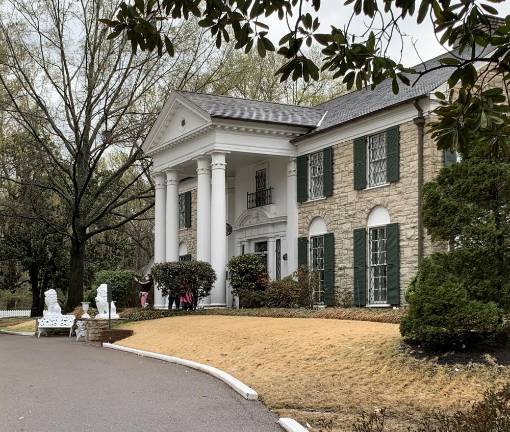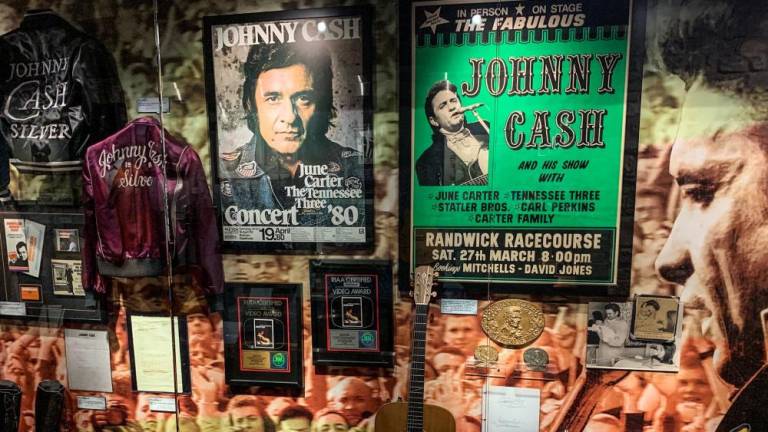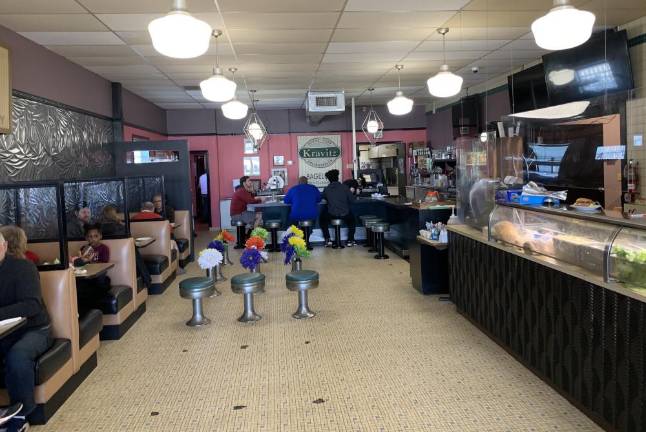For New Yorkers, the pandemic had made traveling outside the Northeast virtually impossible. Different comfort levels have made some uneasy about going anywhere. New York State’s recent reduction of travel restrictions for those who have been vaccinated has made domestic travel far easier during this phase of the pandemic.
Both my wife, who was about to celebrate a big birthday, and I, decided on a driving trip to ascertain how this would work. We wanted to travel to a new destination — the land of music and BBQ, the State of Tennessee. Would masking, social distancing and local COVID rules be lax and not obeyed? We found out on an eight-day car trip.
Our mid-March departure from Manhattan took us to an overnight in Huntington, West Virginia, halfway to our first destination, Memphis. We encountered unusually light traffic on that day’s 600-mile journey, arriving at our motel after 11 hours on the road.
After a night’s rest, another 600 miles of car travel through Kentucky, Missouri and Arkansas brought us to Memphis. While the lightly-trafficked Kentucky parkways seemed like a dream, truck-filled Interstate 55 in Missouri and Arkansas returned us to harsh reality; a half-mile backup greeted us at the Mississippi River bridge to Memphis. Once there, we checked into our hotel and dined at nearby Central BBQ, highly recommended. We enjoyed our ribs, greens and mac and cheese on the outside patio; a masked restaurant staff enforced social distancing allaying our fears. One note — knives were not available due to pandemic shortages.
Our lodging, the Central Station Hotel, is attached to the Amtrak station. It is located in the Arts District, a repurposed warehouse area with creativity displayed in stores, galleries and restaurants. The hotel had a UV mask sterilizer in the lobby for those who wished to use it, but no bell service or valet parking due to the pandemic, and no daily room cleaning unless requested. We met tourists at the hotel from the Sunbelt, but did not meet anyone on the trip from the Northeast.
Dr. King’s Last Hours
Monday morning we spent four hours at the National Civil Rights Museum, located in what was the former Lorraine Hotel, the site of Dr. Martin Luther King’s assassination. Masks were required of all visitors and staff, and everyone complied. The displays, wrenchingly powerful, ended where Dr. Martin Luther King Jr. spent his last hours on April 4, 1968. This experience alone was worth the 18 hours of driving. Informative, sobering and painful, it is important for all Americans to see.
After a snack and a walk to view the Mississippi River, we had a rendezvous with some pampered ducks, denizens of the Peabody Hotel. Daily, from 11 a.m., they frolic and entertain hotel guests in the lobby fountain, escorted at 5 p.m. on a red carpet by the Duckmaster back to their roof penthouse. This tradition of over 80 years drew quite a crowd at our afternoon viewing. Parents and children were all masked.
From the Peabody, it was a short walk to Beale Street, the musical heart of Memphis. With two blocks of stores and music venues geared for tourists, crowds weren’t huge, but there seemed to be many people enjoying the beautiful weather and waiting outside, socially distanced, to enter the restaurants and few clubs that were open. Some businesses there were closed permanently due to the pandemic.
On Tuesday, we drove over an hour to the Delta Blues Museum in Clarksdale, Mississippi. Filled with memorabilia from many musicians, and other related objects, it broadened our knowledge of the musical heritage of the region. We lunched at Abe’s Bar-B-Q, near the historic intersection of U.S. 49 and U.S. 61, an important location. Legend has it that the Delta blues king, Robert Johnson (1911-1938) sold his soul to the devil and there the blues was born.
On to Graceland
We headed back to Memphis, on Highway 61, known as The Blues Highway, the link between the Mississippi Delta and Memphis, the confluence of Blues, Rhythm and Blues, Gospel, Country and Western, Hillbilly and Bluegrass. Our lodging that night, the full-service Guest House at Graceland was pleasant. Alas, it did not offer the nightly Elvis movie, due to pandemic group constraints.
Wednesday morning we went to Graceland to learn more about Elvis Aaron Presley, who as influenced by many of those regional music styles in his work. The tour included the 17,500 square foot Presley Mansion and the Memphis entertainment complex. Overwhelming in scope, this one-of-a-kind museum was well worth visiting. However, there were few occupied spaces in the parking lot, due to city group regulations.
After Graceland, a three hour ride brought us to Nashville. Hattie B’s restaurant near our hotel, introduced us to Nashville hot chicken, offering six levels from bland to “shut the cluck up,” aka, VERY spicy. Despite the torrential rain that night, we enjoyed being in the covered outdoor area, which had adequate natural ventilation.
Thursday, we saw Nashville on an open-air bus tour, walked around a tourist-filled Downtown, saw music venues in swing mid-day, brand-new malls, and masking requirement signage for both inside and outside. Visits to the well-documented Johnny Cash and Patsy Cline Museums were both informative, adding to our awe of Tennessee’s incredible rich musical heritage. The Country Music Hall of Fame and Museum with an almost two hour capacity-restricted wait eluded our tight schedule. The National Museum of African-American Music opened this past Labor Day, is an inspiring addition to all that Music City has to offer.
Back on the road, we overnighted in Kent, Ohio. The last morning, we visited the 81-year old Kravitz Deli in Youngstown, Ohio, sole deli survivor in that area. Adapting to the times and the dwindling Jewish population, the menu reflects many non-traditional choices. Owner Jack Kravitz told us that from March 15 to 17, with lines out the door, they sold 4,000 pounds of corned beef for their biggest customer holiday, St.Patrick’s Day.
As the New Jersey traffic on I-80 built up 30 miles away from the Washington Bridge, we knew we were nearing NYC.
We had braved traveling during the pandemic and found that it wasn’t something to be feared. Any qualms we had about people not observing health mandates were moot, and we cannot wait to get back on the road again for our next long trip.
